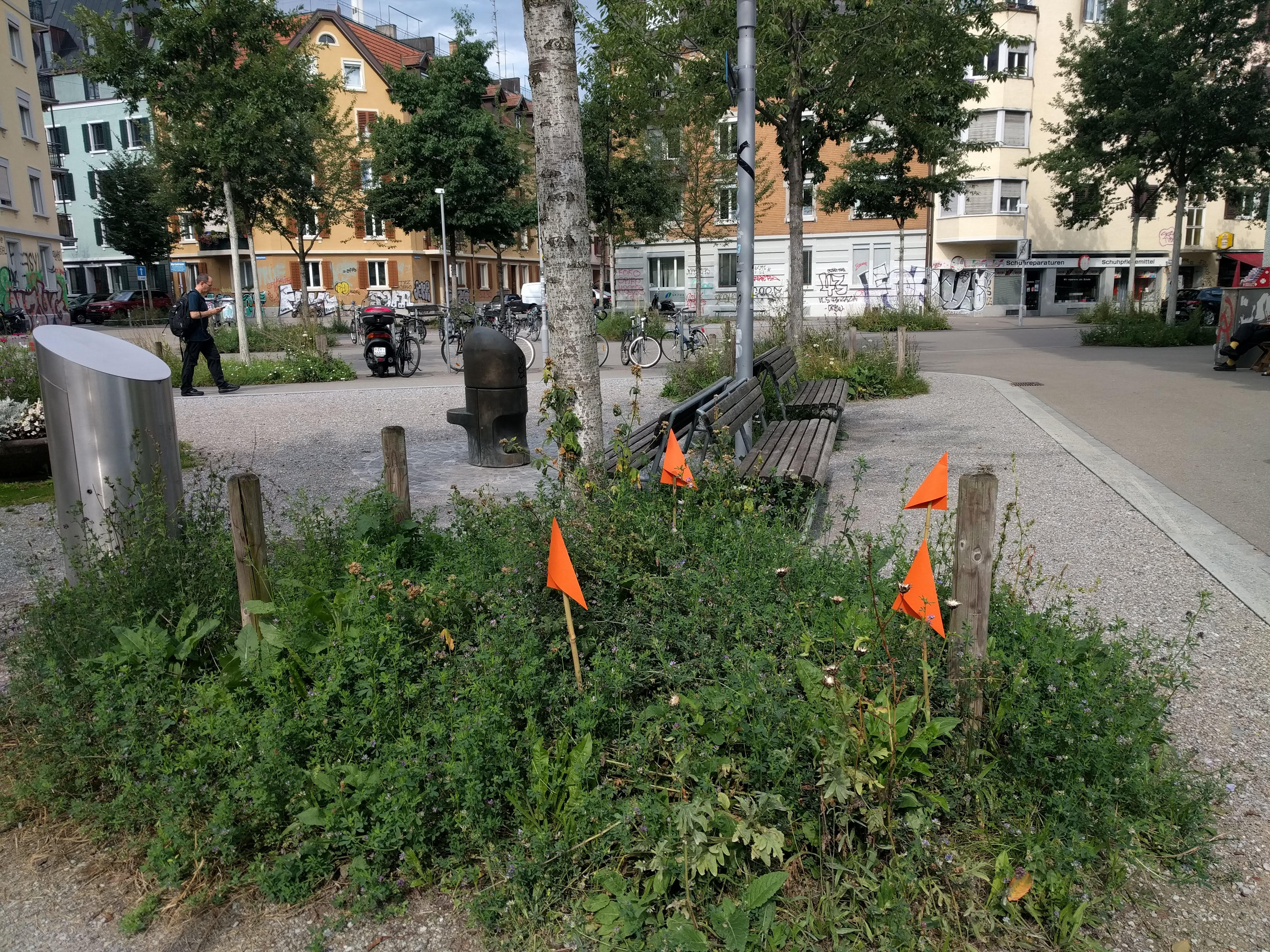B3 - Bienen, Baumscheiben und Bestäubung
Context
Insect pollinators play an invaluable role with ca. 80% of wild and cultivated plants depending on their pollination. However, the last half century has witnessed a dramatic decline in insect abundance as part of an accelerating biodiversity crisis. In Switzerland, around half of all bee and butterfly species are threatened according to the Swiss Red List. This decline has been especially felt in cities where a lack of pollen and habitat fragmentation threaten urban biodiversity. Yet, with proper design and management, cities can be a refuge for pollinators.
About the project
Small vegetation patches now make up the majority of public green spaces in densifying cities. Recent research has revealed the overlooked and underestimated plant diversity and ecological value of these small green spaces. We can create greener more biodiverse cities by promoting species which can thrive in our cities and by creating space for natural regeneration by species already here. In our Citizen Science project B3 – Bienen, Baumscheiben und Bestäubung ("bees, pollination, stem discs"), we utilized and expanded upon previous research to test if higher than expected plant diversity also results in high abundance and functional diversity of pollinators.
Invovlement of citizen scientists
Working with the extensive StadtWildTiere network, our project joined with volunteers to undertake a pollinator survey across the city of Zurich. Volunteers were trained to identify a selection of insect pollinators with a special focus on wild bees and butterflies. They then went out into the urban jungle (along green tram lines, street tree discs, and larger wildflower meadows) to identify and record flower visitors to their chosen patch. Over the summer months, they returned to their patches and see how their visitors changed over the seasons and with the mowing/maintenance of the green space. With this data, we could then analyze how patch size, connectivity, and flower diversity affect pollinator biodiversity.
Results and lessons learnt
The project hoped to reconnect an urban population with the ecology and beauty of mutualistic plant-pollinator interactions in front of their homes and reveal the potential of their local green spaces as part of a larger urban network and ecosystem. We hoped to change/expand people’s perceptions of cities as complex ecosystems and their responsibility to care for them. To make our cities the best habitats for us, we must first see ourselves as just another species making our homes here. The only difference is that we have the power to make our homes better for all through designing, planting, sowing, and supporting our fellow city dwellers.





